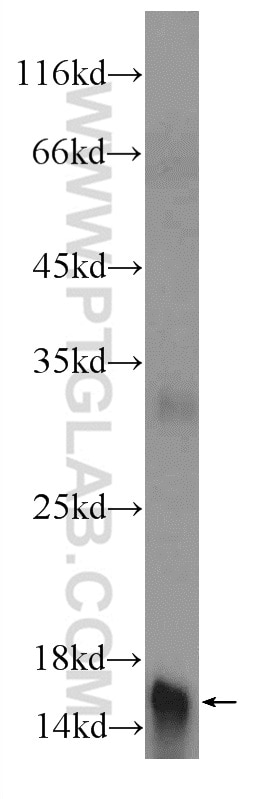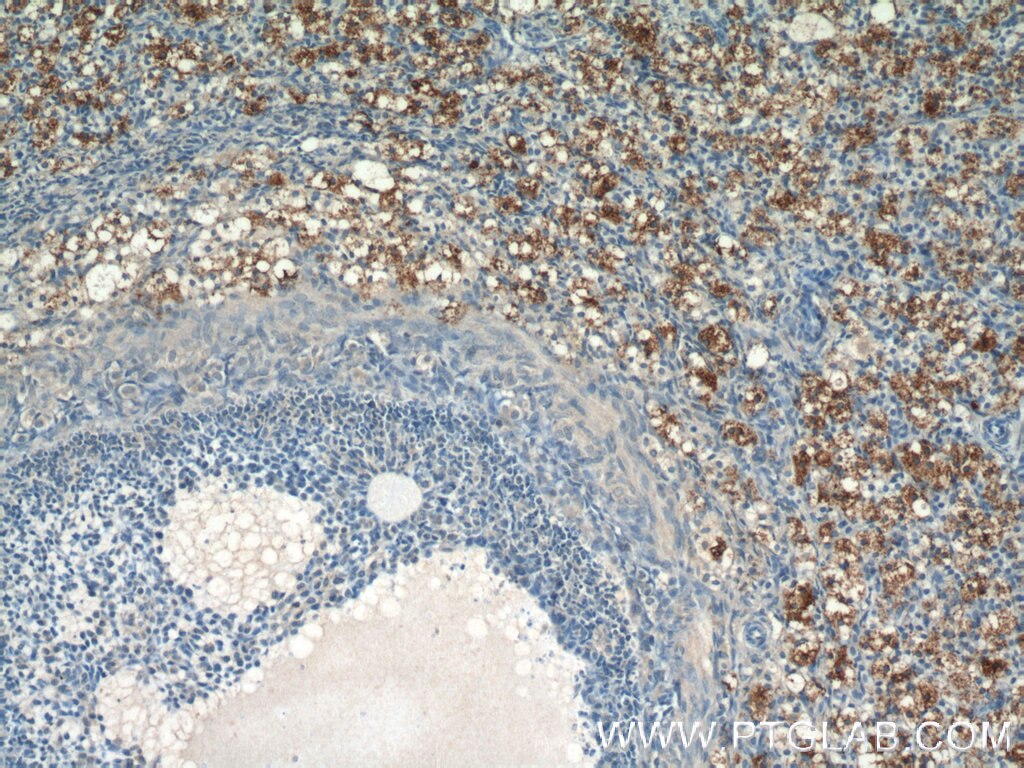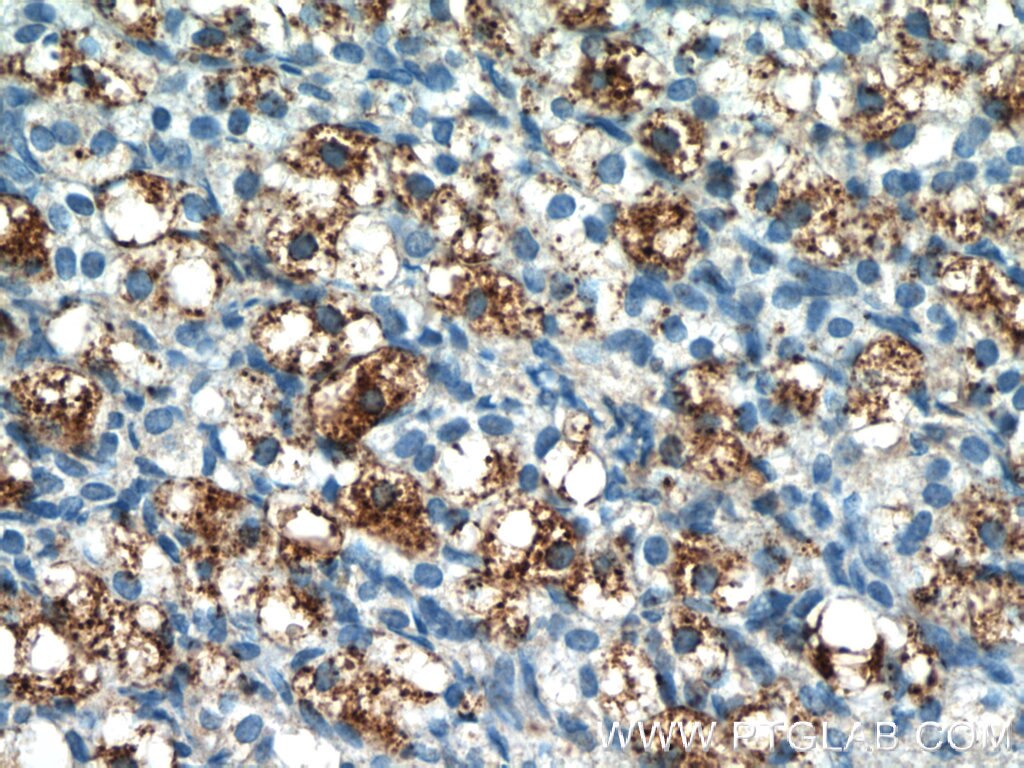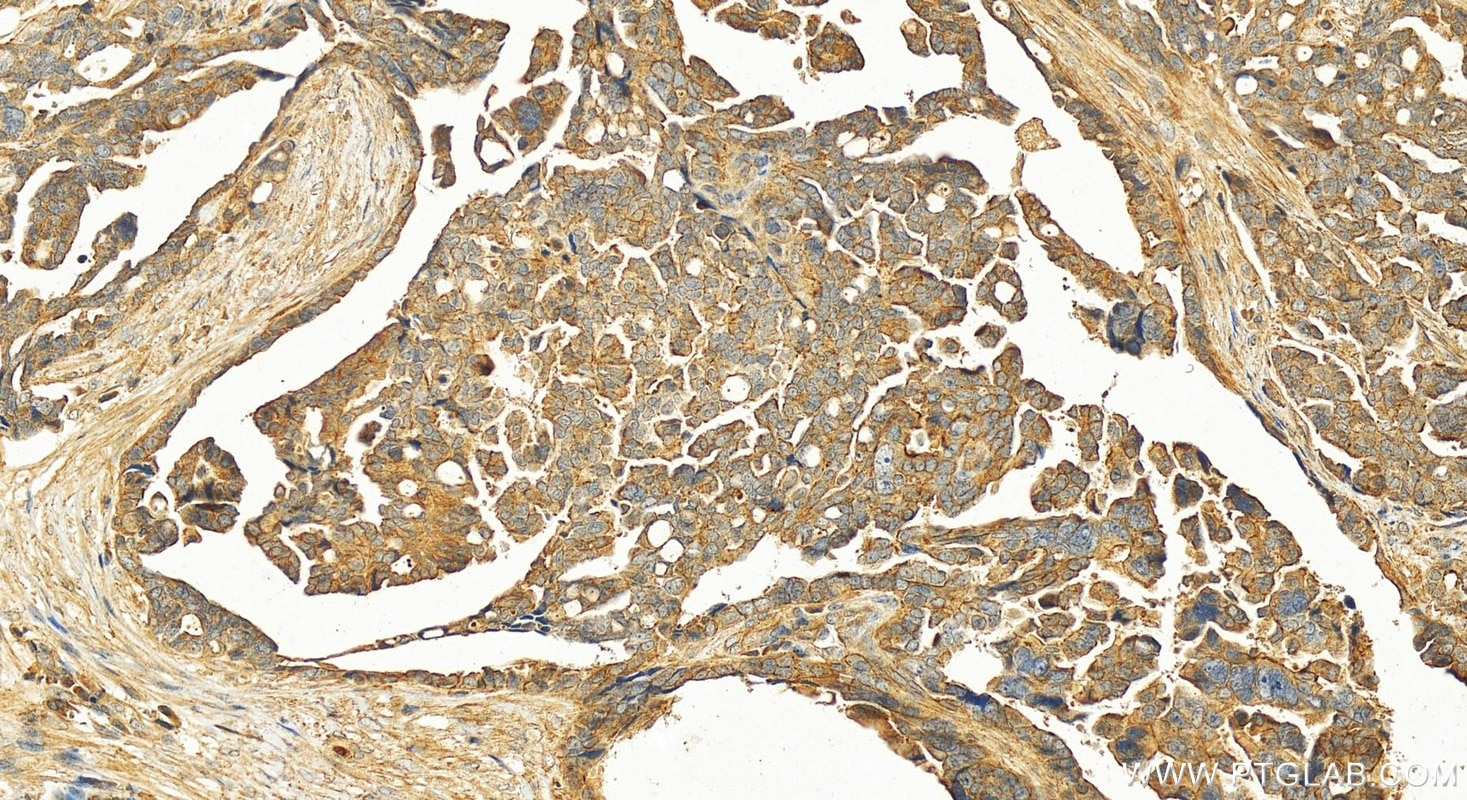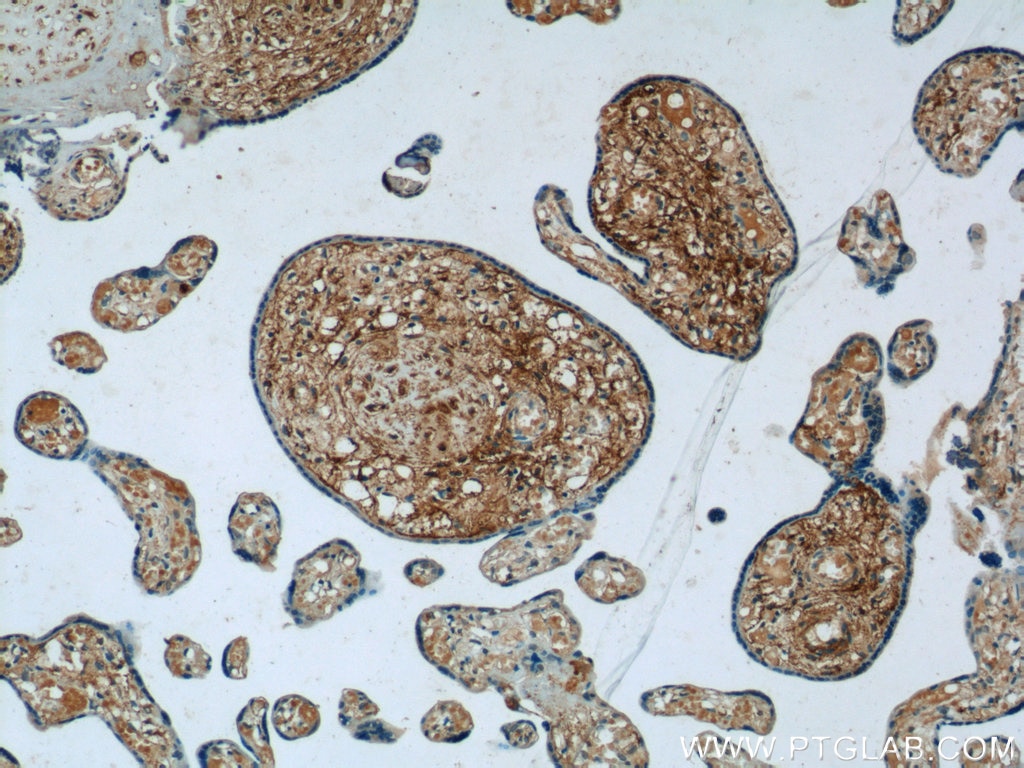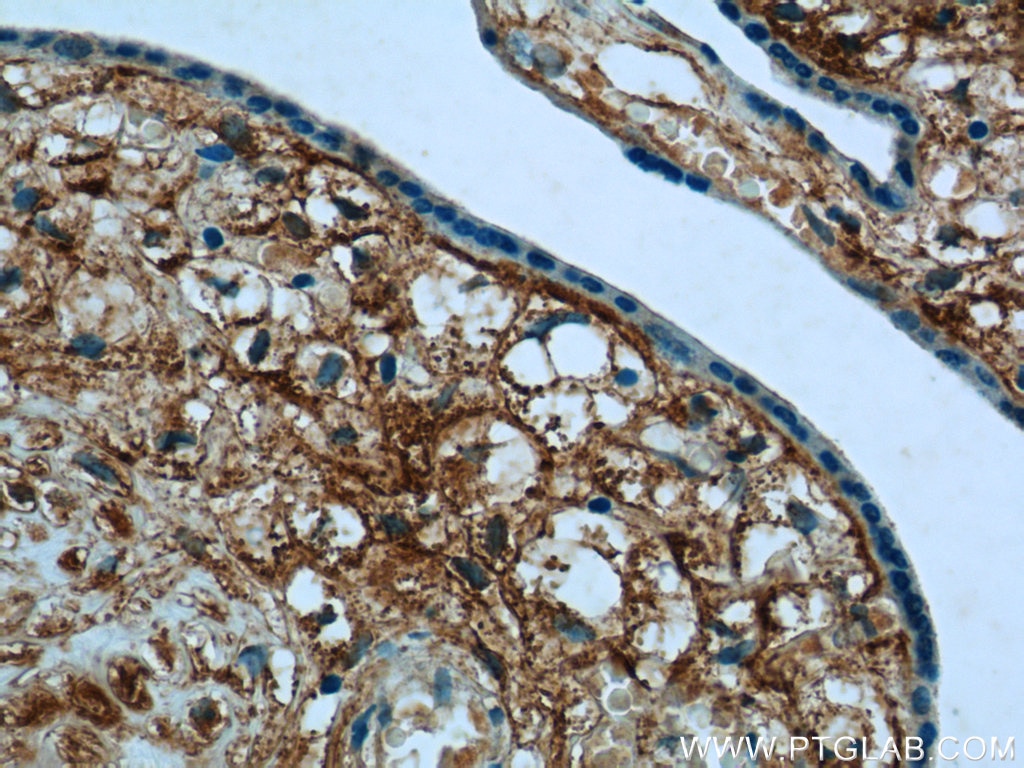Validation Data Gallery
Tested Applications
| Positive WB detected in | human placenta tissue |
| Positive IHC detected in | human ovary cancer tissue Note: suggested antigen retrieval with TE buffer pH 9.0; (*) Alternatively, antigen retrieval may be performed with citrate buffer pH 6.0 |
Recommended dilution
| Application | Dilution |
|---|---|
| Western Blot (WB) | WB : 1:200-1:1000 |
| Immunohistochemistry (IHC) | IHC : 1:50-1:500 |
| It is recommended that this reagent should be titrated in each testing system to obtain optimal results. | |
| Sample-dependent, Check data in validation data gallery. | |
Published Applications
| WB | See 1 publications below |
| IF | See 1 publications below |
Product Information
17343-1-AP targets PLAC1L in WB, IHC, IF, ELISA applications and shows reactivity with human samples.
| Tested Reactivity | human |
| Cited Reactivity | human, mouse |
| Host / Isotype | Rabbit / IgG |
| Class | Polyclonal |
| Type | Antibody |
| Immunogen |
CatNo: Ag11384 Product name: Recombinant human PLAC1L protein Source: e coli.-derived, PGEX-4T Tag: GST Domain: 1-158 aa of BC036256 Sequence: MALEVLMLLAVLIWTGAENLHVKISCSLDWLMVSVIPVAESRNLYIFADELHLGMGCPANRIHTYVYEFIYLVRDCGIRTRVVSEETLLFQTELYFTPRNIDHDPQEIHLECSTSRKSVWLTPVSTENEIKLDPSPFIADFQTTAEELGLLSSSPNLL 相同性解析による交差性が予測される生物種 |
| Full Name | placenta-specific 1-like |
| Calculated molecular weight | 158 aa, 18 kDa |
| Observed molecular weight | 16 kDa |
| GenBank accession number | BC036256 |
| Gene Symbol | PLAC1L |
| Gene ID (NCBI) | 219990 |
| RRID | AB_2878391 |
| Conjugate | Unconjugated |
| Form | |
| Form | Liquid |
| Purification Method | Antigen affinity purification |
| UNIPROT ID | Q86WS3 |
| Storage Buffer | PBS with 0.02% sodium azide and 50% glycerol{{ptg:BufferTemp}}7.3 |
| Storage Conditions | Store at -20°C. Stable for one year after shipment. Aliquoting is unnecessary for -20oC storage. |
Background Information
PLAC1L, also named as TMEM122, is placenta specific protein. It is trophoblastic giant cells stain. The MW of PLAC1L is 16-18 kDa.
Protocols
| Product Specific Protocols | |
|---|---|
| IHC protocol for PLAC1L antibody 17343-1-AP | Download protocol |
| WB protocol for PLAC1L antibody 17343-1-AP | Download protocol |
| Standard Protocols | |
|---|---|
| Click here to view our Standard Protocols |
Publications
| Species | Application | Title |
|---|---|---|
J Neuroinflammation The effect of dipeptidyl peptidase IV on disease-associated microglia phenotypic transformation in epilepsy. | ||
Nat Commun Single-cell transcriptome and translatome dual-omics reveals potential mechanisms of human oocyte maturation |

